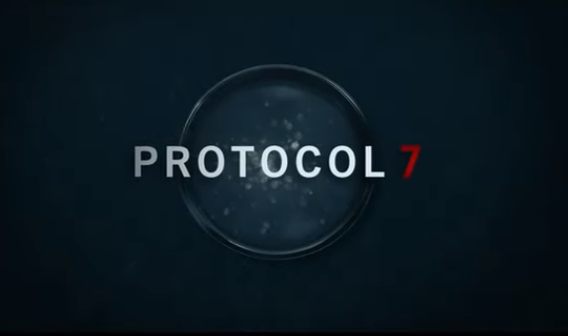37% of Measles Cases Analyzed In The US In 2015 Were Caused By The MMR Vaccine
by Arjun Walia, Collective Evolution:

- The Facts:A study published in 2017 94 measles sequences obtained in the United States in 2015, 73 were identified as vaccine sequences.
- Reflect On:Why is the information presented in this article practically unknown and never given any mainstream media attention? How dangerous is the measles compared to the MMR vaccine?
What Happened: A study published in 2017 in the Journal of Clinical Microbiology found that “During the measles outbreak in California in 2015, a large number of suspected cases occurred in recent vaccinees. Of the 194 measles sequences obtained in the United States in 2015, 73 were identified as vaccine sequences…” The authors developed a test that can identify measles vaccine strains rapidly in order to do this.
The new assay was able to detect RNA from five currently used vaccine strains, AIK-C, CAM-70, Edmonston-Zagreb, Moraten, and Shanghai-191. The MeVA RT-qPCR assay has been used successfully for measles surveillance in reference laboratories, and it could be readily deployed to national and subnational laboratories on a wide scale.
–>Only 1 Day Left To Watch Free: The Need To GROW is a deeply moving and award-winning documentary exploring solutions needed to build a healthy future for humanity. Click here to watch now!
Why This Is Important: It’s important because this study begs the question, how often are measles outbreaks that cause quite a stir as a result of mainstream media coverage actually a result of the MMR vaccine itself? How often are people in these measles outbreaks analyzed and tested to determine whether they have contracted a wild type measles, or a vaccine strain measles? As far as I know there are no studies that have done this accept the one listed above that analyzed a 2015 outbreak. It’s quite common that measles outbreak are largely blamed on the unvaccinated, and the well documented failure of the measles vaccine is never really mentioned nor known about by the general public or doctors who recommend them.
The failure of the measles vaccine has been well documented over the years. As far back as 1994, a paper published in JAME Internal Medicine titled “Failure to Reach the Goal of Measles Elimination: Apparent Paradox of Measles Infections in Immunized Persons” was one of many to highlight this point.
The apparent paradox is that as measles immunization rates rise to high levels in a population, measles becomes a disease of immunized persons. Because of the failure rate of the vaccine and the unique transmissibility of the measles virus, the currently available measles vaccine, used in a single-dose strategy, is unlikely to completely eliminate measles.
At the time of this study, only one measles vaccine was in circulation and as a result of its documented failure, federal health regulatory introduced a second dose requirement for children. This measure has also shown little success, there are a number of examples. The fact remains that we’ve seen measles outbreaks in highly vaccinated populations which begs the question, is the vaccine even effective? Does it even work? Are the antibodies that the vaccine provides children sufficient enough to prevent your child from contracting the measles?
We already know that many healthy people do not respond to routine vaccinations? They are known as non-responders. Up to 10 percent of healthy individuals fail to mount antibody levels to routine vaccines…” A study published in Human Vaccines & Immunotherapeutics highlights this point.
While inadequacies of the vaccine (such as incomplete attenuation, incorrect immunisation route or schedule, or failures in delivery due to interruption of the cold chain) are reasons for vaccine failures that can be logistically overcome, host-related factors for non-responsiveness (associated with the immune and health status, age, or genetic factors) are more difficult to define and underlying mechanisms of vaccine failure are largely unexamined or unknown.”
This means in the United States, for 32,800,000 vaccines will simply not work.
While inadequacies of the vaccine (such as incomplete attenuation, incorrect immunisation route or schedule, or failures in delivery due to interruption of the cold chain) are reasons for vaccine failures that can be logistically overcome, host-related factors for non-responsiveness (associated with the immune and health status, age, or genetic factors) are more difficult to define and underlying mechanisms of vaccine failure are largely unexamined or unknown.”
Another study published in the highly authoritative Bulletin of the World Health Organization looked at recent measles occurrences throughout China and found that there were 707 measles outbreaks in the country recorded between 2009 and 2012, with a steep upward trend in 2013. “The number of measles cases reported in the first 10 months of 2013 – 26 443 – was three times the number reported in the whole of 2012.” This is odd considering that since 2009 “…the first dose of measles-virus-containing vaccine has reached more than 90% of the target population.” One would expect that with an increasing number of measles vaccinations there would be a decrease in measles occurrences.
443 – was three times the number reported in the whole of 2012.” This is odd considering that since 2009 “…the first dose of measles-virus-containing vaccine has reached more than 90% of the target population.” One would expect that with an increasing number of measles vaccinations there would be a decrease in measles occurrences.
Another example comes from a 2017 measles outbreak in vaccinated individuals in Israel—reported on by the CDC—where all but one patient had laboratory evidence of a “previous immune response” (secondary vaccine failure), and the one patient who did not display such evidence reported having received two doses of the vaccine (primary vaccine failure). In addition, the index patient—the one who launched the chain of transmission—had received three doses of the measles-containing vaccine.
Read More @ Collective-Evolution.com



